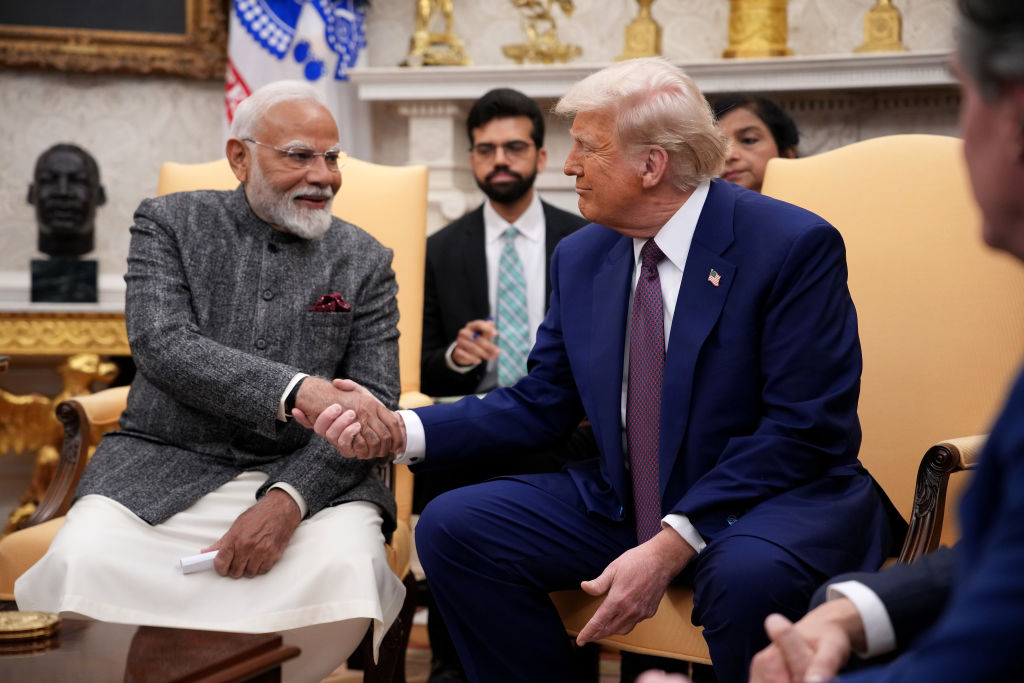In Donald Trump’s first term and at the opening of his second, the U.S. President and India’s Prime Minister Narendra Modi looked to have a special relationship. Similar views on the value of strongman domestic politics and a common aim to check China’s global ambitions made them well-aligned partners. Things have changed. Common interests remain the bedrock of relations between the U.S. and Modi’s India, but the personal trust that helped build their relationship has now cooled significantly.
[time-brightcove not-tgx=”true”]
You might think the biggest source of tension between the two leaders is Trump’s search for leverage over Russia’s Vladimir Putin—in particular, his bid to halt India’s import of sanctioned Russian oil to force Putin to negotiate an end to the war in Ukraine. But it’s another armed conflict that’s at the heart of the friction.
When fighting began in May between India and Pakistan following a terrorist attack in Indian-controlled Kashmir, Trump leaped at the chance to play peacemaker, and he tasked Vice President J.D. Vance and Secretary of State Marco Rubio with de-escalating tensions. Despite India’s plans for a joint announcement of a deal to end the fighting, Trump claimed personal credit, and Pakistan compounded Modi’s anger by suggesting Trump deserved a Nobel Peace Prize for his efforts. Trump then responded to a Pakistani diplomatic charm offensive with lucrative investment deals on energy, cryptocurrencies, and critical minerals. His request that Modi add his support to the U.S. President’s long-standing Nobel ambitions even further alienated the Indian Prime Minister, who began to express his frustrations.
Read More: How Modi Misread Trump
That’s the background for Trump’s decision in August to impose 50% tariffs on India, ostensibly for its continuing purchases of Russian oil. Modi’s response? He accepted an invitation from China’s Xi Jinping to join a number of world leaders, notably including Putin, at the Shanghai Cooperation Organisation summit in Tianjin meant to highlight China’s growing diplomatic clout. It was Modi’s first trip to China in seven years. A ride and hour-long chat with Putin in the Russian President’s limousine sent a clear message of defiance that India and its leader would not be pushed around by the White House.
Modi’s choice to leave Beijing before a triumphalist military parade reflects that permanent interests continue to define the India-China relationship. Washington and Delhi still share a deep mistrust of China’s power and Xi’s intent to use it.
Yet there are now signs that Washington and New Delhi are making progress toward limiting damage to the relationship. In particular, recent developments make it more likely that the U.S. and India will announce a trade agreement by the end of this year.
Read More: How Modi Is Sending Trump a Message
On the digital front, optimism for a deal rose on Sept. 22 when the two governments reportedly agreed not to demand information on source code or other proprietary knowledge as a precondition for U.S. companies doing business in India. U.S. negotiators also hope India will drop restrictions on the import of American soy, a potentially big win for U.S. farmers made anxious by the potential impact of tariffs on the sale of their products, especially as China slows its purchases of American produce. Finally, Modi and Trump may well meet on the sidelines of the East Asia Summit in Malaysia in October. That would go a long way toward easing tensions and helping negotiators get to yes on a trade deal.
Yet, none of this will restore the personal trust that’s been lost between Trump and Modi. Common geopolitical and commercial interests will keep a solid floor under the relationship and continue the longer-term progress of broadening and deepening U.S.-India relations. But the transactional base of relations between the two leaders will continue. New irritants will emerge, as we saw with Trump’s recent announcement of a $100,000 fee added to H-1B visas, which allow high-skilled foreign workers a chance to work in the U.S. About 70% of H-1B visa holders are Indian nationals.
What, Modi must wonder, will Trump come up with next?

